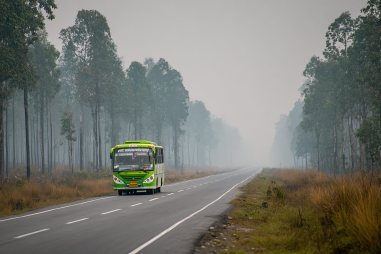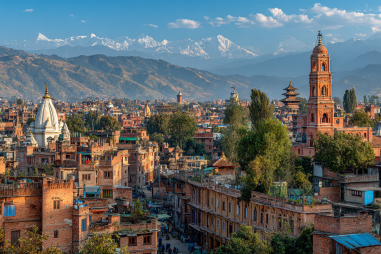Nagarkot, perched atop the hills just outside Kathmandu, is gaining recognition not only for its breathtaking views of the Himalayas but also for its dedicated approach to sustainable travel. As more travelers seek meaningful experiences that minimize environmental impact and uplift local communities, Nagarkot serves as a shining example of eco-tourism done right. This article delves into how Nagarkot is embracing eco-tourism initiatives that preserve its natural beauty and cultural heritage while offering visitors enriching adventures rooted in care for the planet.
Understanding Eco-Tourism and Its Importance
Eco-tourism is more than just visiting natural areas; it is a responsible form of travel focused on conserving the environment, sustaining the well-being of local people, and educating travelers. Unlike traditional tourism that can contribute to pollution, habitat destruction, and cultural disruption, eco-tourism seeks to minimize these negative impacts by promoting sustainable practices and awareness.
The importance of eco-tourism lies in its potential to protect fragile ecosystems, provide economic incentives to conserve natural and cultural resources, and encourage visitors to develop a deeper appreciation for the destinations they explore. It fosters a harmonious relationship between tourists, local communities, and nature, ensuring that travel helps rather than harms.
Nagarkot’s Natural Environment and Conservation Efforts
Situated at an altitude of approximately 2,175 meters, Nagarkot is renowned for its panoramic Himalayan views, dense forests, and tranquil atmosphere. The area is home to a variety of flora and fauna, including many species of birds, mammals, and native plants. This rich biodiversity makes conservation efforts in Nagarkot critical to preserving the environment for future generations.
Local authorities and community groups have initiated several conservation programs such as reforestation projects, waste management drives, and protection of local wildlife habitats. By actively involving residents in these efforts, Nagarkot has managed to keep much of its natural charm intact despite increased tourism. Preservation of water sources and sustainable land use practices also contribute significantly to maintaining the area’s ecological balance.
Eco-Friendly Accommodations and Tours
One of the standout features of Nagarkot’s eco-tourism efforts is the availability of eco-friendly accommodations. Many lodges, homestays, and boutique hotels here implement green practices such as:
- Using solar energy or other renewable sources to reduce carbon footprint
- Employing rainwater harvesting and water recycling systems
- Minimizing plastic usage and encouraging waste segregation and composting
- Constructing buildings with locally sourced, sustainable materials that blend harmoniously with the environment
Additionally, tour operators in Nagarkot focus on low-impact activities like guided nature walks, birdwatching, photography tours, and cultural experiences with local families. These tours emphasize ethical interaction with nature and respect for cultural traditions, often including educational components about environmental conservation.
How Travelers Can Support Sustainable Practices
Visitors play a key role in reinforcing Nagarkot’s eco-tourism mission. Travelers can support sustainable practices by:
- Choosing accommodations and tour operators that prioritize eco-friendly measures
- Reducing waste by carrying reusable bottles, bags, and containers
- Respecting wildlife and natural habitats by maintaining a safe distance and not disturbing the ecosystem
- Supporting local businesses by purchasing handmade crafts, local produce, and hiring community guides
- Sticking to marked trails to avoid damaging flora and soil erosion
Simple habits such as conserving water, switching off unused electrical appliances, and minimizing noise pollution can also make a big difference in preserving Nagarkot’s serene environment.
Community Involvement and Benefits
What truly distinguishes Nagarkot’s approach to eco-tourism is the active involvement of the local community. Many residents have embraced eco-tourism as a sustainable livelihood alternative to farming or urban migration. Homestays offer travelers the chance to live with local families, learn about traditional lifestyles, and enjoy home-cooked meals prepared with organic ingredients.
The community-led initiatives ensure that the benefits of tourism are shared widely, improving social infrastructure such as schools, healthcare, and sanitation facilities. Training programs equip locals with skills in hospitality, environmental management, and language proficiency, empowering them economically and socially. This grassroots participation helps foster pride in cultural heritage and motivates continued stewardship of natural resources.
Responsible Travel Tips in Nagarkot
When visiting Nagarkot, adopting responsible travel habits enhances your experience and contributes positively to the destination’s sustainability. Consider the following tips:
- Travel during off-peak seasons to avoid pressure on local resources
- Respect local customs and dress modestly when meeting community members
- Use biodegradable soaps and detergents to protect soil and waterways
- Carry out all non-biodegradable waste; utilize recycling bins if available
- Avoid single-use plastics such as straws or bags
- Ask permission before photographing people or private land
- Practice low-impact hiking by staying on designated trails and not picking plants
Being mindful and considerate helps maintain the integrity of Nagarkot’s environment and culture for others to enjoy.
The Future Outlook for Eco-Tourism in the Region
Nagarkot’s potential as an eco-tourism destination is immense and set to grow, fueled by global demand for sustainable travel options. Continued collaboration between government agencies, non-governmental organizations, local communities, and private businesses is vital to expanding eco-friendly infrastructure, strengthening conservation policies, and enhancing visitor education programs.
Innovations such as community-based monitoring, carbon offset initiatives, and integration of smart technology for resource management could further bolster Nagarkot’s eco-tourism appeal. Increasing awareness among travelers about the importance of sustainable travel will likely lead to a deeper commitment to protect the region’s natural and cultural heritage.
In summary, Nagarkot exemplifies how tourism can be a positive force when guided by eco-conscious principles and community empowerment. By exploring its trails, interacting with welcoming locals, and embracing eco-friendly choices, travelers contribute to a cycle of preservation and prosperity in this Himalayan paradise.
Travelers seeking to make a difference will find that Nagarkot’s eco-tourism initiatives provide a meaningful way to connect with nature responsibly while supporting a sustainable future for all who call this beautiful hill station home.







